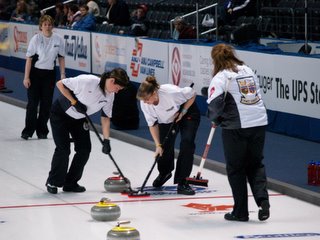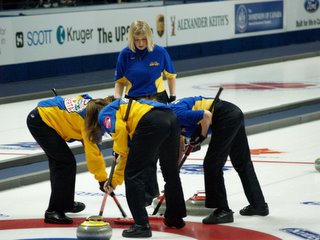Egg (McMuffin) on the Face of Kansas City Star Reporter
From the Philadelphia Inquirer:
Joe Posnanski of the Kansas City Star and some buddies were sitting in a McDonald's making fun of curling - both, by the way, favorite pastimes of Olympic journalists.
"The lines got progressively worse as the evening went on," Posnanski wrote, "which of course meant we were laughing harder. We probably were being pretty loud. But there was only one other guy in the entire restaurant, and hey, it was curling. What did he care?
" 'Excuse me, guys,' the guy said.
He turned to us. He said: 'I couldn't help but overhear. It sounds like you guys are talking about my sport, curling.'
"We apologized for being loud. That's when he reached into his bag and pulled out the silver medal he had won in curling at the Olympics in Nagano.
"Some things can happen only at the Olympics.
" 'The sport's not going anywhere,' he said to us with a little edge in his voice, and he shook the Olympic medal. 'The people are watching. The kids are playing.' "
[h/t to AsianWildRose for the pointer]





















